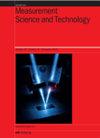A domain adaptation network with feature scale preservation for remaining useful life prediction of rolling bearings under variable operating conditions
IF 3.4
3区 工程技术
Q1 ENGINEERING, MULTIDISCIPLINARY
引用次数: 0
Abstract
Transfer learning and domain adaptation (DA) methods have been utilized in bearing prognostic and health management, but most of the current DA methods do not take into account the feature scale change of degraded features when aligning the feature distribution, and these methods are more suitable for the classification problem, which is more robust to the feature scale change. However, they perform poorly in regression problems. In addition, most of the remaining useful life (RUL) prediction methods require preprocessing such as statistical feature extraction on the signal, which makes the prediction process complicated. To solve the above problems, a DA method based on the representation subspace distance (RSD) is proposed for predicting the bearing RUL under different operating conditions. First, the proposed convolutional neural network (CNN) self-attention (SA) long short term memory network model is utilized to extract the deep features from the original signal, which overcomes the limitations of the CNN in extracting time series. Then, the RSD in the Riemannian geometry of the Grassmann manifold is proposed as a domain transfer loss to learn domain invariant features. The modified method can align the feature distribution of the source domain and the target domain without changing the feature scale. At the same time, the bases mismatch penalization is introduced to avoid destroying the semantic information of the features in the process of domain alignment. Finally, the effectiveness of the proposed method is verified by experiments on four types of transfer tasks, and its superiority is also demonstrated by comparison with other advanced methods.具有特征尺度保存功能的域适应网络,用于预测不同工作条件下滚动轴承的剩余使用寿命
转移学习和域适应(DA)方法已被应用于轴承预报和健康管理中,但目前大多数 DA 方法在对齐特征分布时没有考虑退化特征的特征尺度变化,这些方法更适用于分类问题,因为分类问题对特征尺度变化具有更强的鲁棒性。然而,这些方法在回归问题上表现不佳。此外,大多数剩余使用寿命(RUL)预测方法都需要对信号进行统计特征提取等预处理,这使得预测过程变得复杂。为解决上述问题,本文提出了一种基于表示子空间距离(RSD)的 DA 方法,用于预测不同工作条件下轴承的剩余使用寿命。首先,利用提出的卷积神经网络(CNN)自注意(SA)长短期记忆网络模型从原始信号中提取深层特征,克服了 CNN 在提取时间序列方面的局限性。然后,将格拉斯曼流形的黎曼几何中的 RSD 作为域转移损失来学习域不变特征。改进后的方法可以在不改变特征尺度的情况下对齐源域和目标域的特征分布。同时,为了避免在域对齐过程中破坏特征的语义信息,引入了碱基不匹配惩罚。最后,通过对四类转移任务的实验验证了所提方法的有效性,并通过与其他先进方法的比较证明了其优越性。
本文章由计算机程序翻译,如有差异,请以英文原文为准。
求助全文
约1分钟内获得全文
求助全文
来源期刊

Measurement Science and Technology
工程技术-工程:综合
CiteScore
4.30
自引率
16.70%
发文量
656
审稿时长
4.9 months
期刊介绍:
Measurement Science and Technology publishes articles on new measurement techniques and associated instrumentation. Papers that describe experiments must represent an advance in measurement science or measurement technique rather than the application of established experimental technique. Bearing in mind the multidisciplinary nature of the journal, authors must provide an introduction to their work that makes clear the novelty, significance, broader relevance of their work in a measurement context and relevance to the readership of Measurement Science and Technology. All submitted articles should contain consideration of the uncertainty, precision and/or accuracy of the measurements presented.
Subject coverage includes the theory, practice and application of measurement in physics, chemistry, engineering and the environmental and life sciences from inception to commercial exploitation. Publications in the journal should emphasize the novelty of reported methods, characterize them and demonstrate their performance using examples or applications.
 求助内容:
求助内容: 应助结果提醒方式:
应助结果提醒方式:


